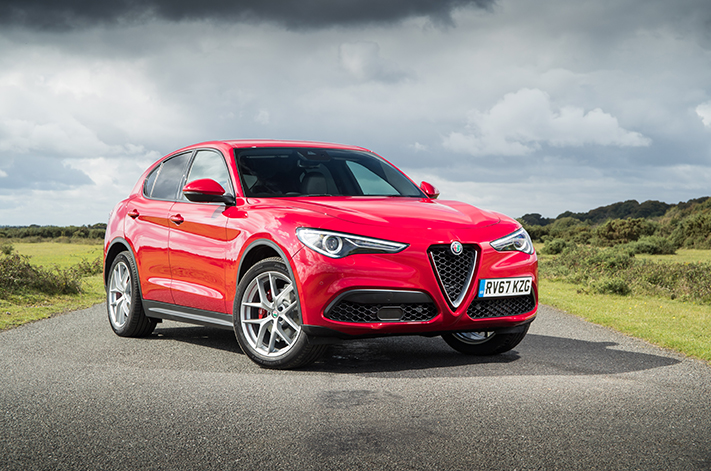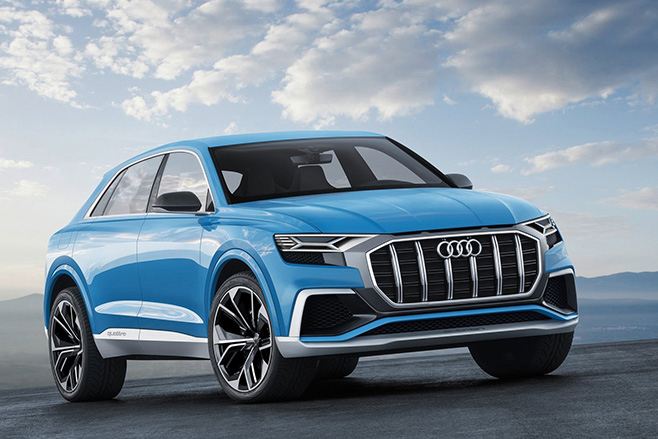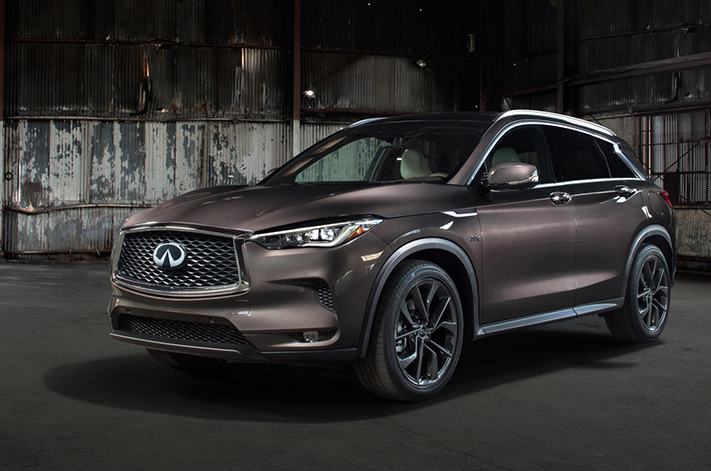
Last year was big for luxury SUV releases, with premium brands introducing a host of all-new models resulting in dealership forecourts brimming with high-riding metal and leather – and there are more new models still to come.
Brand-new or next-generation models that arrived during the past 12 months include the Audi Q2 and Q5, BMW X3, Jaguar E-Pace, Jeep Grand Cherokee Trackhawk, Land Rover Discovery, Maserati Levante, Range Rover Velar and Volvo XC60.
It’ll be more of the same in 2018, with a diverse range of highly anticipated SUVs arriving from Europe and Japan bringing new levels of luxury and performance. These include:
Alfa Romeo Stelvio
Alfa Romeo’s first-ever SUV will arrive sometime in the next couple of months, with petrol and diesel engine options at launch ahead of a high-powered Stelvio Quadrifoglio flagship. The 149kW petrol and 156kW diesel will be paired with an eight-speed automatic and all-wheel drive as standard, with the rear-wheel drive and manual options available in Europe deemed unsuitable for our market.
Pricing is expected to start around $77,000 with standard equipment including autonomous emergency braking, forward collision warning, blind spot monitoring and lane departure warning. Two option packages – luxury-focused ‘Lusso’ or sports-flavoured ‘Veloce’, will allow owners to up-spec their Stelvios.

Audi Q8
Audi already has somewhat of a yardstick for big luxury SUVs in the form of the Q7, and its sporty sibling the SQ7 trashes any talk about SUVs being unable to deliver driver enjoyment, with a 320kW/900Nm twin-turbo V8 diesel engine. So we look forward to seeing what its sleeker big brother, the Q8, will have to offer.
We’ve already been given a glimpse of the Q8 via a concept revealed at the 2017 Detroit motor show in January, which featured a “luxury lounge” cabin for seating four people, as well as Virtual Cockpit technology and a plug-in hybrid system producing 330kW/700Nm. The production version is due later in 2018 and will be aimed squarely at the Mercedes-Benz GLE Coupe and BMW X6. As well as the hybrid version, expect a high-performance SQ8 variant powered by a 325kW 4.0-litre V8.

Infiniti QX50
Nissan’s luxury sub-brand has totally redesigned the QX50 mid-size SUV, plonking it on an all-new platform and adding a revolutionary variable compression ratio engine, that combines the power of a 2.0-litre turbocharged petrol engine with the torque and efficiency of a four-cylinder diesel, by adjusting its compression ratio to optimise power and efficiency.
The Infiniti QX50 also offers a range of technologies including its ProPILOT advanced driver assistance technology, including adaptive cruise control, automatic emergency braking and a lane-keeping assist system that works on single-lane highways.
The production QX50 shares much of the design cues seen on the QX50 concept at the 2017 Detroit motor show in January including the swept back roofline.

Porsche Cayenne
The third-generation Porsche Cayenne has been heavily influenced by the smaller Porsche Macan and promises sharper dynamics than before to make it feel more like a high-riding 911 with plenty of room for the whole family.
The refreshed Cayenne range features two newly developed six-cylinder engines, with the hero-model Cayenne S capable of sprinting from 0-100km/h in just 4.9 seconds with an optional Sport Chrono Package fitted. Each version of the Cayenne will feature active all-wheel drive, electric chassis control and three-chamber air suspension, which all lead to excellent on-road performance as well as decent off-road capability for the brave.
Inside, the Cayenne will gain the multimedia system developed for the Porsche Panamera, including a 12.3-inch touchscreen and a thermal imaging camera that will spot animals – and wayward pedestrians – in the dark.

Volvo XC40
Volvo’s smallest-ever SUV is expected here in the first half of 2018 with pricing to start around the $45,000 mark, making it very competitive against other Euro crossovers including the Mercedes-Benz GLA, Audi Q2 and Jaguar E-Pace.
It will be available initially with a D4 turbo-diesel four-cylinder or a T5 turbo-petrol inline-four, with three-cylinder turbo petrol, plug-in hybrid and pure electric powertrains added after 2019.
Technology highlights include Volvo’s latest vertically-oriented infotainment display and all-electronic instrument panel and Volvo’s Pilot Assist driver assist tech.
The interior is also designed to not only boost comfort, but provide more intelligent storage as well, with huge door bins capable of taking a handbag or full-size laptop, under-seat drawers, a dedicated phone shelf with an inductive charging pad and a built-in waste bin hidden in the centre console.





